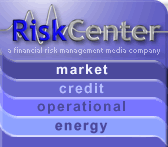Location: New York
Author: Ed Kim
Date: Tuesday, April 29, 2008
The probability of additional increases in the global grain prices is now
higher than before. This is due to the forecast of potential summer drought
in the Midwest by agricultural meteorologist Dr. Elwynn Taylor of Iowa State
University. He is the highly regarded guru of weather forecasting for
agricultural yield, especially corn. In his 2008 forecast for corn, Taylor
notes that the corn yield is projected to be lower due to below average
precipitation caused by the La Nina, a weather condition in the Pacific
Ocean:
“The risk of below trend (150.6 BPA [bushel per acre]) US Corn Yield is 72%
with La Nina and will diminish to 60% if the La Nina fades before June
arrives.” [i]
Dr. Taylor has also noted two other ominous signs for a lower Midwest corn
yield:
“History tells us that the average time span between major droughts in the
Midwest is about 19 years," he points out. "The last major drought was 1988
-- 19 years ago."
"Out of the 17 major droughts that have occurred in the Midwest in the past
100 years, 16 were preceded by a major drought in the Southeast," says
Taylor. "So, the drought in the Southeast is another bad sign."
"We have no scientific evidence to think that all three factors [La Nina, 19
year drought cycle, SE drought preceding the Midwest drought] and will gang
up on us next year to create a major drought, but these are certainly all
factors that will put people on edge."
If Dr. Taylor is correct, and I think he will be, then the likelihood of the
current grain shortage intensifying has gotten more certain.
Another ominous sign comes from the National Agricultural Statistics Service
(NASS) Crop Progress report, a service of the Agricultural Statistics Board
of the U.S. Department of Agriculture. As of April 21, the NASS Crop
Progress report notes a lower crop planting of corn than same period last
year – 4% versus 17% – in 18 states that account for 91% of all corn
planting. Rice and winter wheat were also lower than last year at 26% versus
43% in 100% of the rice growing states and 7% versus 14% in 90% of the
winter wheat growing states, respectively. As for the winter wheat, the
report goes on to note that the quality of the winter wheat is lower this
year than last (55% of the winter wheat was of fair quality or worse versus
46% of the winter wheat last year).
Risk Events Arising From the Growing Grain Shortage
In addition to the 14 risk events that I have noted previously, expect the
following risk events to unfold:
* As drought hits the Midwest, the crop yields for corn and wheat will be
lower, resulting in ever-higher prices for these grain as well as other
grains that will move upward in a sympathetic move
* Prices of products containing corn syrup, cereal, meat, dairy, and ethanol
will increase rapidly
* Shortage of corn and wheat will force the U.S. to export less abroad,
further increasing the spot price of grain and exacerbating the grain
shortage worldwide
* More countries will halt exports of grain to ensure sufficient supply of
grain for domestic consumption
* Expect to see / hear news of mass migration of people trying to escape
local food shortages
* Rapid advances in and acceptance of genetically modified grains as
substitutes without understanding the full consequences
* Higher ethanol production prices will result in higher gasoline prices at
the pumps
* Gasoline, diesel, and electric prices will rise as speculators take
advantage of the rising grain shortage to drive up the prices of other
commodities
* Water rights will become valuable and contested, especially in arid areas
Silver linings
Even in the most negative situation, there are positives that can be gleaned
from it:
* Americans’ food portion will be smaller due to the higher food costs. This
will lead to lowering of obesity rate and other health problems associated
with overeating
* More families will turn to growing their own vegetables to make ends meet.
This will increase healthier eating habits, further reducing health problems
* As more families begin eating smaller portions, the amount of garbage will
decrease. This will result in lower landfill and associated pollution
* Americans facing strained household budgets will begin to economize, which
will lead to decrease in overall consumption, including oil based products –
less driving, less packaging, less eating out, etc.
* Higher fuel costs will lead to increased carpooling and less driving,
which will help to reduce traffic and lower pollution levels in many cities
* Higher fuel cost will spark a renewed awareness in conservation not only
of food but of fuel, electricity, water, and other limited resources

To subscribe or visit go to: http://www.riskcenter.com